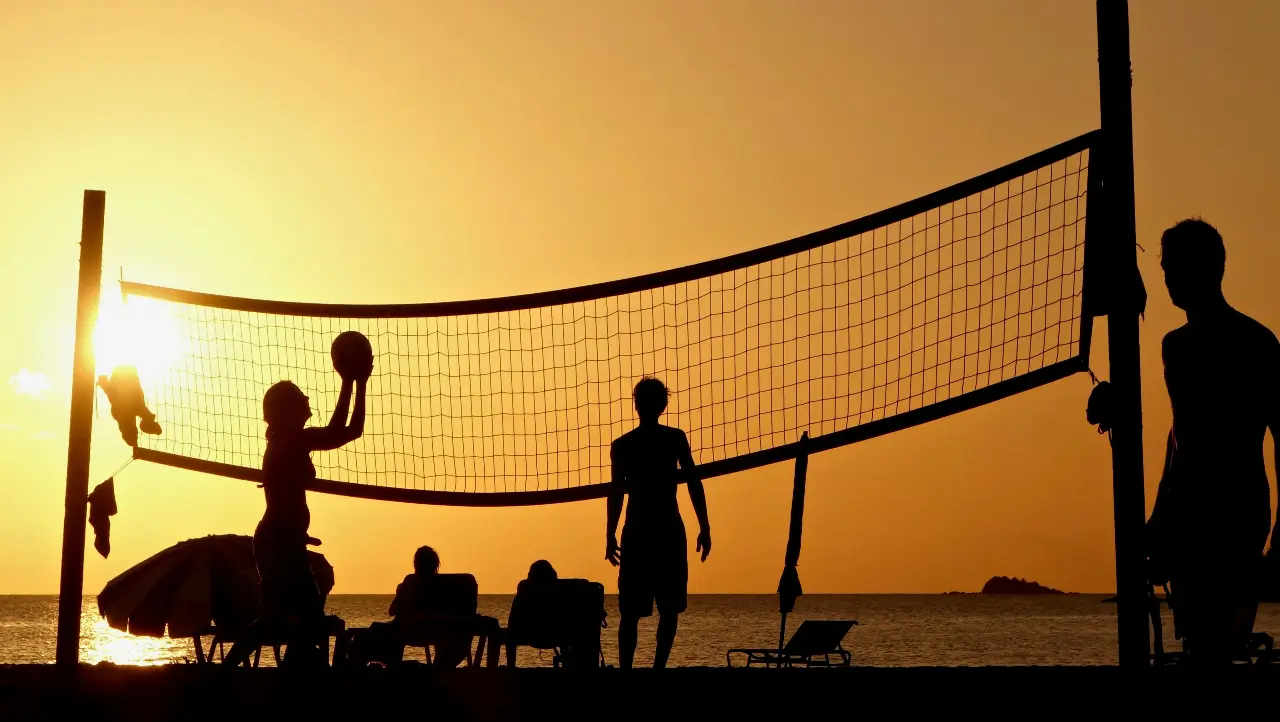Launch Ball | Small Sided Group Game | Net Court & Wall
May 5, 2024


Kas
Looking for a suspenseful and highly engaging ‘Net, Court & Wall’ game for your whole class to play? ‘Launch Ball’ is the perfect minor game to introduce your class too- prior to a unit on volleyball, badminton, tennis or any net court game. This game can be used as a teaching tool for body positioning, team communication and shot placement for your students! Or for the younger year levels- throwing and catching skills. This activity will be sure to get your students excited to be active and allows for so many great learning opportunities to occur regardless of the what Net Court and Wall sport your eventually progress too.

This game covers it all in a fun way that your whole class will love! Get started right now, all you need is a court, ball and a class!
What Do You Need?
- Volley ball/ Basketball
- Tennis/ Volleyball/ Badminton nets
- Court Space
How do you play?
Set up:
Split the class up into teams of two or teams of four if you have sufficient space
One team will versus another team whilst the other two teams will play each other on another court
The centre of the court ideally will be split with a tennis net our volleyball net, If these are not available, you can use any marking cone to identify the centre of the court

Game play:
- Each team will try to throw the ball over the centre line in an attempt for it to land on the opposing teams court. If this occurs the team that has the ball land on their court loses the point.
- Teams need to try and defend their court by catching the ball. Once a player catches the ball they can not pass it to another teammate, they will need to throw it over the net using an underarm throw.
- Students can not under any circumstance take a step when they have the ball, they are stuck in the mud but can take a pivot step.
- Students try to throw it as high in the air as possible to make it hard for the opposing team to catch the ball
- The same player on each team can not catch the ball twice, if this occurs they will lose a point
- Players can move around the court when they are not in possession of the ball.
What Is The Goal Of The Game?
- To land the ball on the opposing teams court
- To throw the ball into the gaps and as high as you can

How can you modify it?
Make it easier!
- Allow it to bounce once
- Make teams bigger
- Use a bigger ball
Make it Harder!
- Less players on each side
- Larger court space
- Fixed positions
- 3 seconds to catch and throw (Hot Potato)
What are the main skills being utilised?
Fundamental Movement Skills:
- Locomotor- run, jump, dodge, lunge, side step, leap
- Stability- turning, balance, stopping, bending, stretching
Tactical Skills:
- Scanning the field of play to make decisions
- Looking for gaps on the field
- Cooperative play, supporting teammates
- Following rules and structures of a game
- Critical thinking through decision-making
3 reasons why throwing and catching games are important for your students!
1.Physical Development:
- Hand-eye coordination: Mastering throwing and catching improves hand-eye coordination, which is fundamental for various daily activities and sports. According to a study published in the Journal of Motor Learning and Development, developing hand-eye coordination through activities like throwing and catching positively influences overall motor skill proficiency in children (Pesce, C., Masci, I., Marchetti, R., Vazou, S., & Sääkslahti, A. (2016).
- Gross motor skills: Throwing and catching involve gross motor skills such as balance, coordination, and strength, which are essential for physical fitness and overall health. A study in the Journal of Physical Education, Recreation & Dance states that practicing fundamental movement skills like throwing and catching improves children’s overall motor competence (Lubans, D. R., Morgan, P. J., Cliff, D. P., Barnett, L. M., & Okely, A. D. (2010).
2.Cognitive Development:
- Spatial awareness: Learning to judge distance and trajectory while throwing and catching enhances spatial awareness and visual-spatial processing skills. According to research published in the Journal of Sport and Health Science, spatial awareness is positively correlated with children’s academic achievement and problem-solving abilities (Levinson, E., & Palmer, E. (2018).
- **Problem-solving: **Throwing and catching involve problem-solving skills as students adjust their movements to successfully catch or throw an object. A study in the Journal of Experimental Child Psychology suggests that activities requiring problem-solving skills, such as throwing and catching, promote cognitive development in children (Diamond, A., & Lee, K. (2011).
3.Social Development:
- Teamwork and cooperation: Activities involving throwing and catching often require teamwork and cooperation, fostering social interaction and communication skills. A study in the European Physical Education Review highlights the importance of cooperative learning activities, including throwing and catching, in promoting positive social behaviors among students (Casey, A., & MacPhail, A. (2018).
- Building relationships: Collaborating in throwing and catching activities provides opportunities for students to build relationships and develop empathy and understanding towards their peers. According to research in the Journal of Applied Developmental Psychology, cooperative physical activities contribute to the development of positive peer relationships (Esteban-Cornejo, I., Tejero-González, C. M., Martinez-Gomez, D., del-Campo, J., & González-Galo, A. (2015).

Sources:
- Pesce, C., Masci, I., Marchetti, R., Vazou, S., & Sääkslahti, A. (2016). Fundamental Motor Skills: A Systematic Review of Terminology. Journal of Motor Learning and Development, 4(1), 59–90.
- Lubans, D. R., Morgan, P. J., Cliff, D. P., Barnett, L. M., & Okely, A. D. (2010). Fundamental movement skills in children and adolescents: review of associated health benefits. Sports Medicine, 40(12), 1019–1035.
- Levinson, E., & Palmer, E. (2018). The Relationship Between Spatial Awareness and Academic Achievement. Journal of Sport and Health Science, 7(1), 102–108.
- Diamond, A., & Lee, K. (2011). Interventions shown to aid executive function development in children 4 to 12 years old. Science, 333(6045), 959–964.
- Casey, A., & MacPhail, A. (2018). Cooperative Learning in Physical Education: A Research Based Approach. European Physical Education Review, 24(2), 192–209.
- Esteban-Cornejo, I., Tejero-González, C. M., Martinez-Gomez, D., del-Campo, J., & González-Galo, A. (2015). Impact of Movement Interventions as Socialization Contexts on Preschool Children’s Social and Emotional Development. Journal of Applied Developmental Psychology, 39, 64–70.